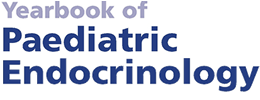ESPEYB18 3. Thyroid Clinical studies (3 abstracts)
3.12. Randomised trial of block and replace vs. dose titration thionamide in young people with thyrotoxicosis
Wood CL , Cole M , Donaldson M , Dunger DB , Wood R , Morrison N , Matthews JNS , Pearce SHS & Cheetham TD
Eur J Endocrinol. 2020;183:637–645. doi: 10.1530/EJE-20-0617.
This study provides for the first time clear evidence that the block and replace (BR) strategy (combination of carbimazole plus levothyroxine) is not superior to the carbimazole dose titration (DT) strategy for treatment of paediatric Graves’ disease.
Wood et al. present the first randomized controlled multicentre trial of patients with Graves’ diseases in the paediatric age group comparing treatment stability of DT vs. BR. Each patient (n=82) was randomized shortly after diagnosis and treated for three years. The authors found no difference between DT and BR in percentage of TSH or FT4 levels in or outside the reference range during the study period. However, 3/40 patients on BR vs. 0/41 on DT developed neutropenia.
These data are important, providing for the first-time clear evidence that BR therapy has no advantage on long-term biochemical stability compared to DT, although BR is still widely used by paediatric endocrinologists [1]. These data strengthen the current guidelines of the American Thyroid Association and European Thyroid Association (ATA and ETA) [2,3] which do not recommend BR because of its higher carbimazole dose and therefore increased risk of drug-related side effects, as shown by a meta-analysis in adult patients [4].
Reference: 1. Lawrence N, Cheetham T, Elder C. How do paediatricians use and monitor antithyroid drugs in the UK? A clinician survey. Clin Endocrinol (Oxf). 2019;91:417–423. doi: 10.1111/cen.14046.2. Ross DS, Burch HB, Cooper DS, Greenlee MC, Laurberg P, Maia AL, Rivkees SA, Samuels M, Sosa JA, Stan MN, Walter MA. 2016 American Thyroid Association Guidelines for Diagnosis and Management of Hyperthyroidism and Other Causes of Thyrotoxicosis. Thyroid. 2016;26:1343–1421. doi: 10.1089/thy.2016.0229.3. Kahaly GJ, Bartalena L, Hegedüs L, Leenhardt L, Poppe K, Pearce SH. 2018 European Thyroid Association Guideline for the Management of Graves’ Hyperthyroidism. Eur Thyroid J. 2018;7:167–186. doi: 10.1159/000490384.4. Abraham P, Avenell A, McGeoch SC, Clark LF, Bevan JS. Antithyroid drug regimen for treating Graves’ hyperthyroidism. Cochrane Database Syst Rev. 2010;2010(1):CD003420. doi: 10.1002/14651858.CD003420.pub4.



